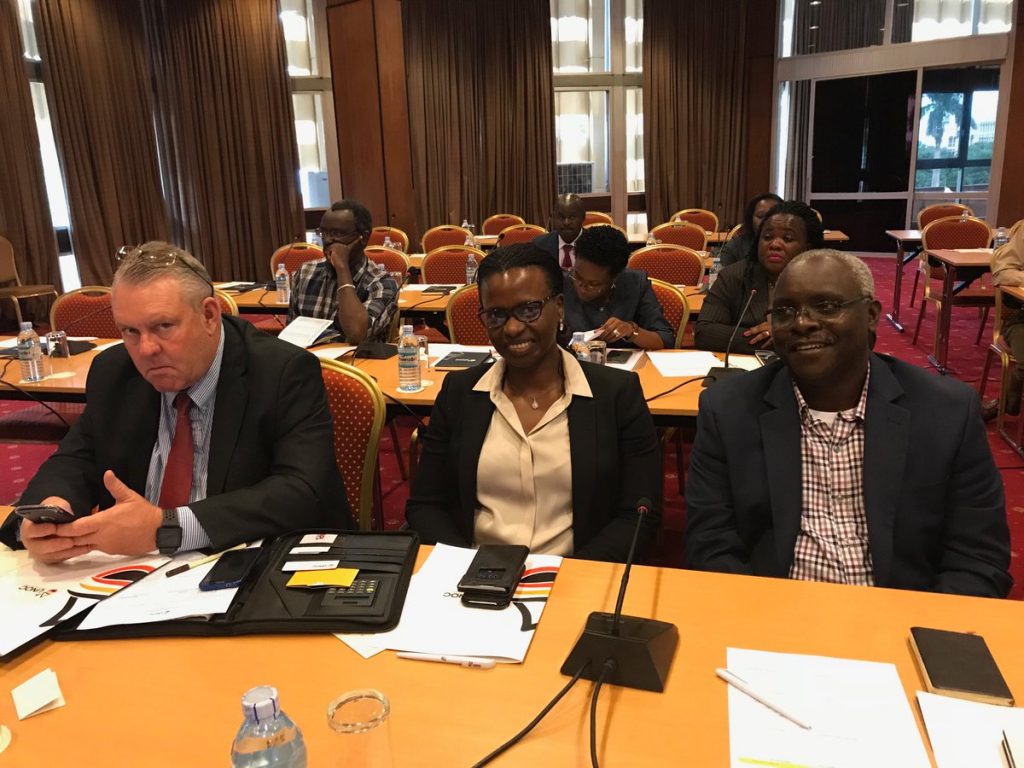10 years from now, in 2029 there will be no newspaper in Uganda left- unless of course the government decides to prop up The New Vision, with subsidies, mainly for political reasons or the Nation Media Group (NMG) decides to keep an unprofitable Daily Monitor, merely for pride’s sake.
But the latter is unlikely as NMG, itself is struggling with its own Daily Nation.
Why do we think so?
First of all, Ugandan newspapers are built on a wrong model. While the world over, many newspapers rely on circulation revenue more than they do on advertising revenue, Ugandan newspapers derive their survival from advertising. This compromises the quality of news as advertisers quite often hold the newspapers at ransom. This ultimately chases away readers, who do not find the news served by the papers attractive enough.

According to the World Association of Newspapers and News Publishers (WANIFRA), in 2017, global newspapers and news media generated an estimated US$ 150.2 billion in revenue. Out of this $87.2 billion (58%) came from print and digital circulation, while $67.8 billion (42%) came from advertising.
WANIFRA is a non-profit, non-governmental organization made up of 76 national newspaper associations, 12 news agencies, 10 regional press organisations, and many individual newspaper executives in 100 countries.
So with the entry of the digital revolution, that has put evident pressure on newspaper circulation, rather than innovate to attract readers, newspaper executives have responded by increasing cover prices and advertising rates, further accelerating the challenges of the industry, bringing it closer to an inescapable death.
A 12 year analysis by this website, gleaned from reports by the Audit Bureau of Circulations (South Africa) shows that while combined circulation of three of Uganda’s leading dailies (The New Vision, Daily Monitor and Bukedde) grew by 4.3% from 74,862 copies in 2007 to 78,114 copies, minus Bukedde (a luganda daily), the two English dailies (Daily Monitor and The New Vision) lost 28.2% of their circulation- from 59,279 to 42,193 copies.
Weekend newspapers lost 55.6% of their circulations from a combined total of 59,897 copies in 2007 to 26,560 copies in December 2018.
Monitor Publications Limited, the publishers of Daily Monitor and Sunday Monitor took a bigger fall. Daily Monitor, lost 34% of its circulation, from 25,700 copies in 2007 to 16,941 at in 2018 while Sunday Monitor saw 58.1% of their readership disappear- from 25,531 copies to 10,689 copies.
Copies sold by The New Vision have fallen by 24.8% from 33,579 copies to 25,252 copies while Sunday Vision has lost 53% of its circulation- from 34,366 copies to 15,871 copies.
On the other hand, Bukedde has grown by 130.5% from 15,583 copes to 35,921 copies.

Dr. Josephine Wapakhabulo, CEO, Uganda National Oil Company (centre) and Vision Group CEO Robert Kabushenga at a media event hosted by the oil company. Nation Media Group and Vision Group, the country’s 2 leading media blocks will have to strategically copete or compete themselves to death.
This is regardless of an estimated 7 million growth in population.
An analysis of Vision Group’s published results shows the impact this is having on the industry.
Circulation revenues for the group grew by only 5%- from UGX20.3 billion in 2013 to UGX21.3 billion in 2018 and this was largely propped up by cover price increases as well as increased Bukedde sales. However, circulation revenue as a portion of total revenue has fallen from 26.8% in 2015 to 21.3% in 2018.
Across the entire print industry, falling circulation, coupled with increased advertising rates continue to push away advertisers. According to media research firm, Ipsos, print advertising spend as a portion of total advertising spend that for several years averaged 16%, in 2017 and 2018, sunk to 13% and is not expected to improve soon.
It is therefore not surprising that Vision Group reported that Print advertising revenue as a percent of total group revenue fell from 36.5% in 2015 to 31.7% in 2018 while print advertising revenue as a portion of total group advertising revenue reduced from 72.3% in 2013 to 53.5% in the same period.
In real terms, Vision Group reported that although print remains the cash cow both in revenue and profitability, combined circulation and print advertising revenue (the principal revenue source for any newspaper) fell from UGX54.95bn in 2015 to UGX50bn in 2018- a decline of 8.86%.
The impact of all this is showing on overall turnover and profitability.
Much as the segment statistics for Monitor Publications are not readily available, what is available shows that overall, revenues at MPL which steadily grew from UGX11.3 billion in 2004, reaching a high of UGX30.6bn in 2015, are now stuck at UGX29bn for 2016 and 2017 and most likely could go down in 2018, if the declining circulation figures are anything to go by.
MPL however reported profit for 2016 and 2017, after years of losses.
There are no independently verifiable figures for Red Pepper and The Observer, but industry sources say the pressures there are not any different, or even worse.
A difficult 10 years ahead
If newspapers in Uganda have had a hard time in the last 12 years, it is expected that the next 10 years will be even harder.
A closer analysis of the last 12 years shows that while in the first 6 years (2007-2012) combined total circulation of English Dailies fell by 6% and that of weekenders fell by 29%- the next 6 years saw an accelerated fall- 21% for dailies and 36% for weekenders. Following this trend, the next 5 years could be harder seeing an even faster death.

The Ipsos Media consumption and usage habits in Uganda report (NAMS Report Half Year 2018) released in Q3 of 2018 does not bear any good news for the industry at all and is telling about the future.
The report showed that the percentage of Ugandans reporting reading newspapers in 7 days has reduced from 29% in 2010 to 17% in 2014 and to 8% in 2018- of these nearly 50% do not buy but rather read other people’s copies or at the office.
According to the report, only 58% of Uganda’s newspaper readers are able to consistently access current copies, with more than 40% of print consumers currently reading previous day’s news copies. Areas like Amuru, Isingiro, Pader and Mitooma read 100% old news papers.
By comparison the number of Ugandans watching TV has grown from 27% to 34% while, although the number of Ugandans listening to radio dropped 11 percentage points from 98% to 89%, radio still remains a dominant platform.
Nationally the number of Ugandans who reported using the internet grew phenomenally from 1% to 9%.
A closer analysis of the report shows that newspaper readership amongst the ABCD social class, who are the most economically active and moneyed class, has also reduced from 50% in 2014 to 22.5% in 2018.
By comparison, internet consumption in this class has gone up to 32.75%. Television is at 62.25% while Radio is at 81%.
Amongst the youth (18-24 years) who are tomorrow’s readers, while newspaper readership is relatively higher than the national average – 10% in 2018, suffice to note, in 2014 it was 18%.
Radio is the main media activity consumed by the youth (85%) followed by TV (40%) and internet at 13%.
Failure to commercialise Digital
Just in case you are thinking there is something wrong with newspapers in Uganda, the answer is maybe there is nothing particularly wrong with our newspapers, other than the fact that as a platform, newspapers are paling, giving way to the internet and specifically the smart phone, that serves news on the go and with record speeds.
Elsewhere, South Africa’s Daily Sun, the continent’s largest newspaper has taken possibly the largest hit- losing 76% of its circulation, down from 501,734 copies sold daily in April 2009 to a mere 119,772 copies in December 2018.
Daily Nation, East Africa’s largest newspaper owned by Nation Media Group has also lost its circulation by 34.5%, from 160,378 copies sold in April 2009 to 105,000 copies in December 2018. This has got everything to do with NMG’s year on year bad performance since 2013- the group’s turnover has fallen from KShs 13.4 billion in 2013 to KShs10.6 billion in 2017. Like night follows day, profit has also fallen from KShs3.6bn to KShs2bn in the same period.
And that’s not to say, people have stopped reading news- but rather more and more readers prefer to read news online and social media is supplying much of that news today.
As traditional revenue sources continue to come under pressure, media house owners must innovate, especially on the digital side where most of the growth is coming.
According to the WANIFRA report although print circulation revenue print still makes up nearly 90 per cent of publishers’ overall circulation revenue, subscription based digital circulation revenue continues to grow at a double-digit rate, having increased 18.4 per cent YoY.

The challenge for Ugandan newspapers therefore is how to commercialise their digital assets. For example New Vision has 483,200 twitter followers and 1,279,000 on Facebook. Its website: www.newvision.co.ug is visited by 980,000 people. Vision’s digital revenues are only reported at average 3% for the last 5 years.
Daily Monitor has 594,000 followers on Twitter and 1,203,000 on Facebook while its website is visited by 1,630,000 people across the world. If only the newspapers could figure out how to make each of these readers pay $2 (UGX7,500) per month- this could fetch a good Ugx12.2 billion for Daily Monitor alone.
But first they must unite, fix industry issues and stop competing with each other to the grave.
For example- by uniting they will be able to save unnecessary costs. For example, New Vision can leverage the idle capacity of its huge printing press to print Daily Monitor, thereby earning an extra revenue and in return outsource its UGX1.9bn a year distribution expense to NMG’s Nation Couriers who handle Daily Monitor’s distribution.
To manage the concentration risk characterised by a heavy reliance on print media and circulation revenue as the primary source of revenue, the industry needs go beyond beautiful mission and vision statements and fully entrench the digital/mobile first digital model and embed the digital culture in the organization.
They must start thinking and acting both digitally by hiring the right talent and rationalising the existing talent- by either training or getting rid of old school talent that cannot match the needs of a digital era.


 Umeme formally disputes UGX 429.2 billion buyout: How will this end?
Umeme formally disputes UGX 429.2 billion buyout: How will this end?